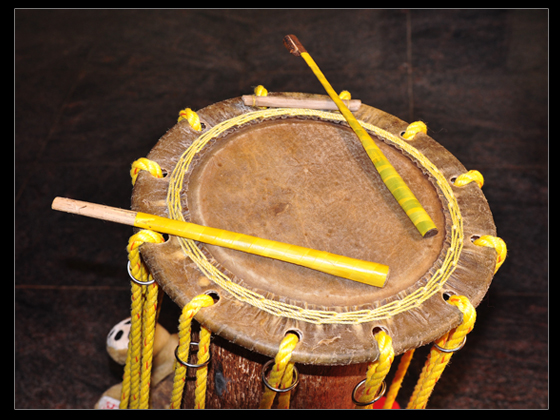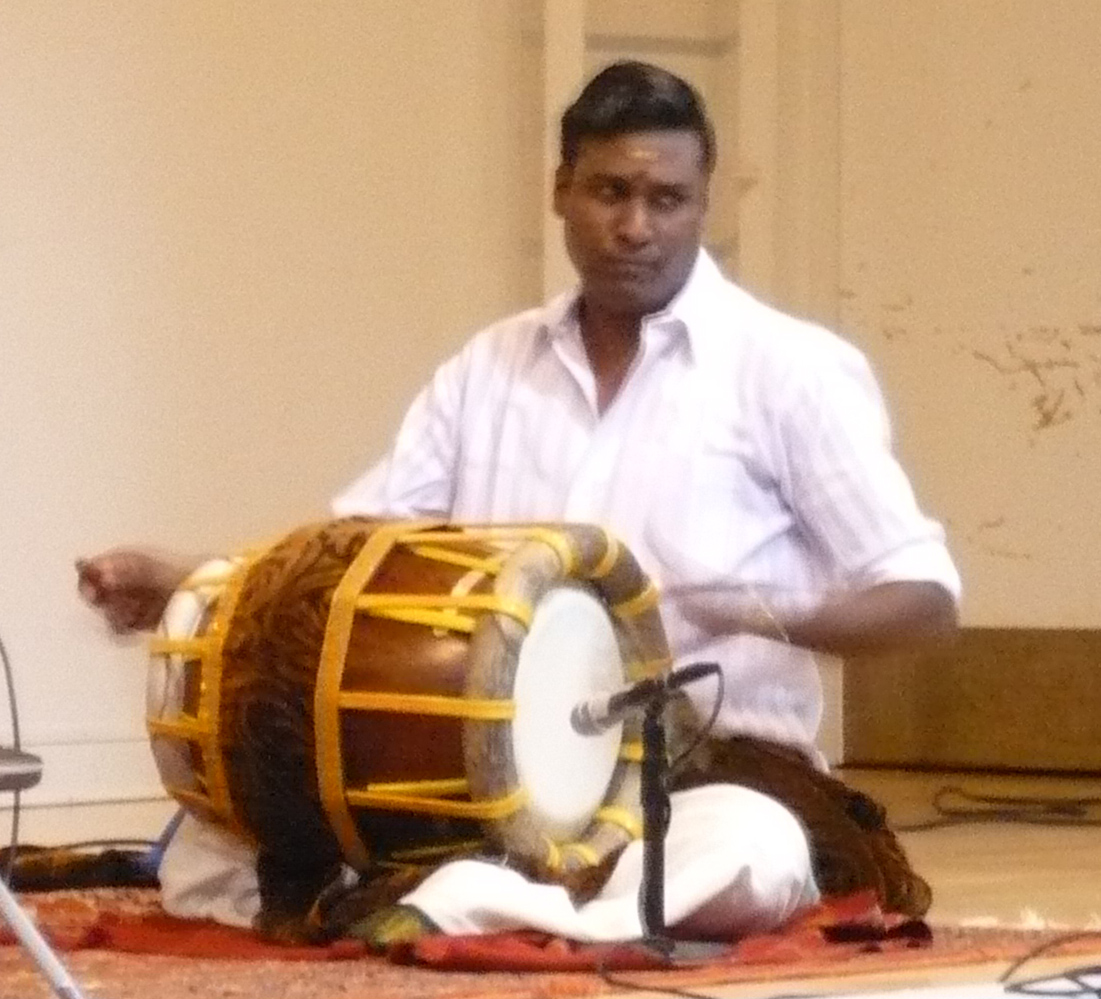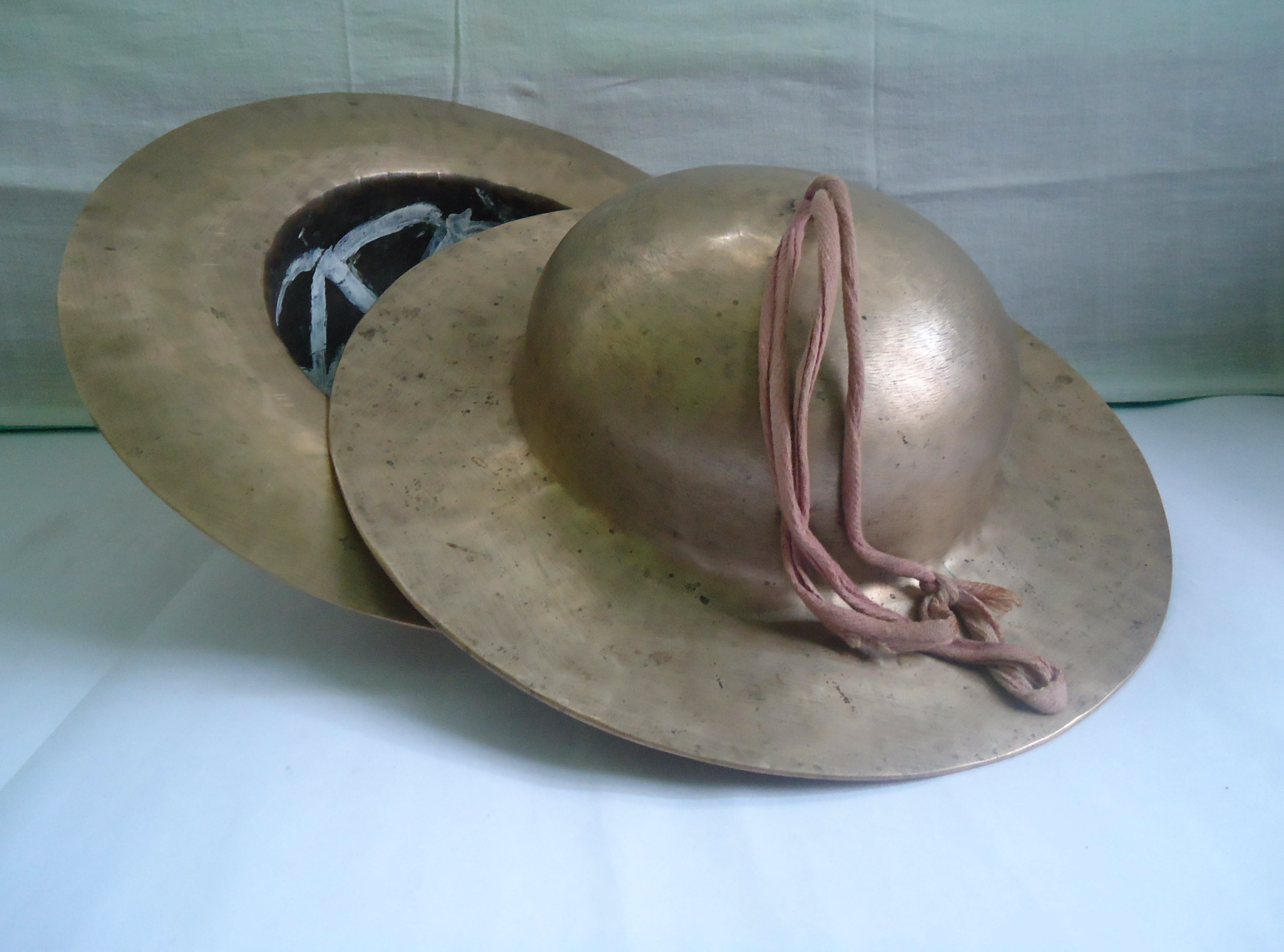|
Chande
The ''chande'' is a drum used in the traditional and classical music of South India and particularly in Yakshagana theatre art of Karnataka. It follows the Yakshagana Tala system. The rhythms are based on pre-classical music forms that Karnataka Sangeta and Hindustani Sangeetha are based on.''Prof. Sridhara Uppura, Yakshagana and Nataka, Diganta Sahitya Publications, 1998, Managalore. There are different varieties of this instrument; two major varieties being the ''Badagu Thittu Chande'' (Northern School) and the ''Thenku Thittu Chande'' (Southern School). The latter can also be spelled ''chenda'' and is used exclusively in the art forms of southern coastal Karnataka and Kerala. This article deals with ''Badagu Thittu Chande'', used exclusively in Yakshagana of Karnataka. The chande used in ''Badagu Thittu'' is structurally and acoustically different from the ''chenda'' used in Kerala. History In ancient Hindu sculpture, painting, and mythology, the ''chande'' is often depic ... [...More Info...] [...Related Items...] OR: [Wikipedia] [Google] [Baidu] |
Yakshagana
Yakshagaana is a traditional theatre, developed in Dakshina Kannada, Udupi, Uttara Kannada, Shimoga and western parts of Chikmagalur districts, in the state of Karnataka and in Kasaragod district in Kerala that combines dance, music, dialogue, costume, make-up, and stage techniques with a unique style and form. It is believed to have evolved from pre-classical music and theatre during the period of the Bhakti movement.Prof. Sridhara Uppura; 1998; ''Yakshagana and Nataka Diganta''; publications. It is sometimes simply called "Aata" or ''āṭa'' (meaning "the play"). This theatre style is mainly found in coastal regions of Karnataka in various forms. Towards the south from Dakshina Kannada to Kasaragod of Tulu Nadu region, the form of Yakshagana is called ' and towards the north from Udupi up to Uttara Kannada it is called '. Both of these forms are equally played all over the region.(Not sure about this one but) Yakshagana is traditionally presented from dusk to dawn. Its stories ... [...More Info...] [...Related Items...] OR: [Wikipedia] [Google] [Baidu] |
Yakshagana Tala
Yakshagana Tala (Kannada:ಯಕ್ಷಗಾನ ತಾಳ, pronounced as ''yaksha-gaana taala''), is a rhythmical pattern in Yakshagana that is determined by a composition called Yakshagana Poetry, Yakshagana Padya. Tala also decides how a composition is enacted by dancers. It is similar to Tala in other forms of Indian music, but is structurally different from them. Each composition is set to one or more talas, and as a composition is rendered by Himmela, the percussion artist(s) play supporting the dance performance.Prof. Sridhara Uppara. 1998.Yakshagana and Nataka Diganta publications Tala is maintained by the singer using a pair of Yakshagana bells, finger bells. The instrument for rhythm in Yakshagana are the Chande, Maddale and a Yakshagana Tala (bell) is also used along with chande. Yakshagana has a complete and complex system for rhythms. The most common Talas in Yakshagana are Matte, Eaka,Udaape, Jampe, Rupaka, Trivde, Atta, KorE and Aadi. Each tala has a cycle of N beats ... [...More Info...] [...Related Items...] OR: [Wikipedia] [Google] [Baidu] |
Maddale
The Maddale ( kn, ಮದ್ದಲೆ) also called Mrudanga(ಮೃದಂಗ) in North Canara region is a percussion instrument from Karnataka, India. It is the primary rhythmic accompaniment in a Yakshagana ensemble along with Chande. Maddale also represents a remarkable progress in percussive instruments as it produces the perfectly hormonic tonic (shruti swara) when played anywhere on the surface compared to Mrudangam, Pakawaj or Tabla that can not produce the tonic (shruti) on all parts of the drum surface. The traditional variety of Maddale was 30 cm long, had 8 inch drum head for right and produced the louder sound. These days 6 - 6.5 inch wide right side maddale is used with only a few using 7 inch wide. Left bass side is about an inch (few hairs less) bigger than right. Maddale is available in more than three different variations. Maddale used in Yakshagana looks similar to mridangam but is markedly different in structure, acoustics, playing techniques and the rhythm ... [...More Info...] [...Related Items...] OR: [Wikipedia] [Google] [Baidu] |
Pitched Percussion Instruments
Pitch may refer to: Acoustic frequency * Pitch (music), the perceived frequency of sound including "definite pitch" and "indefinite pitch" ** Absolute pitch or "perfect pitch" ** Pitch class, a set of all pitches that are a whole number of octaves apart ** Relative pitch, the ability to identify a given musical interval between two notes * Pitch accent, a form of accentuation in speech Business * Sales pitch, a line of talk that attempts to persuade someone or something ** Pitch (filmmaking), a proposal for a film ** Elevator pitch, a very short sales presentation, allegedly short enough to be made during an elevator ride Measurement Movement about the transverse axis * Pitch angle (or pitch rotation), one of the angular degrees of freedom of any stiff body (for example a vehicle), describing rotation about the side-to-side axis ** Pitch (aviation), one of the aircraft principal axes of rotation (nose-up or nose-down angle measured from horizontal axis) ** Pitch (ship motion), ... [...More Info...] [...Related Items...] OR: [Wikipedia] [Google] [Baidu] |
Asian Percussion Instruments
{{disambiguation ...
Asian may refer to: * Items from or related to the continent of Asia: ** Asian people, people in or descending from Asia ** Asian culture, the culture of the people from Asia ** Asian cuisine, food based on the style of food of the people from Asia ** Asian (cat), a cat breed similar to the Burmese but in a range of different coat colors and patterns * Asii (also Asiani), a historic Central Asian ethnic group mentioned in Roman-era writings * Asian option, a type of option contract in finance * Asyan, a village in Iran See also * * * East Asia * South Asia * Southeast Asia * Asiatic (other) Asiatic refers to something related to Asia. Asiatic may also refer to: * Asiatic style, a term in ancient stylistic criticism associated with Greek writers of Asia Minor * In the context of Ancient Egypt, beyond the borders of Egypt and the cont ... [...More Info...] [...Related Items...] OR: [Wikipedia] [Google] [Baidu] |
Carnatic Music Instruments
Carnatic most often refers to: *Carnatic region, Southern India *Carnatic music, the classical music of Southern India Carnatic may also refer to: *Carnatic Wars, a series of military conflicts in India during the 18th century *, a ''Bangor''-class minesweeper of the Royal Indian Navy, that served in World War II *, a 74-gun third rate ship of the line of the Royal Navy, launched at Deptford in 1783 *, a 74-gun third rate ship of the line of the Royal Navy, launched at Portsmouth Dockyard in 1823 * – one of several vessels of that name *Carnatic Hall, built by slave trader, now closed university residence {{disambiguation, ship ca:Carnàtic ... [...More Info...] [...Related Items...] OR: [Wikipedia] [Google] [Baidu] |
Thavil
A ''thavil'' (Tamil:தவில்) or ''tavil'' is a barrel-shaped percussion instrument from Tamil Nadu. It is also widely used in Andhra Pradesh, Karnataka, Kerala, Tamilnadu and Telangana States of South India. It is used in temple, folk and Carnatic music, often accompanying the ''nadaswaram''. The ''thavil'' and the ''nadaswaram'' are essential components of traditional festivals and ceremonies in South India. In folk music contexts, a pair of wider, slimmer sticks are sometimes used. Thanjavur is famous for ''thavil'', so called ''Thanjavur Thavil''. In Kollywood Filmi songs thavils are mostly used, Notable movies: "Thillaanaa Mohanambal", "Paruthiveeran", "Karagattakaran", "Sarvam Thaala Mayam". History Thavil is a traditional musical instrument of the ancient city of Thanjavur in Tamil Nadu. It is an integral part of the Carnatic music in Thanjavur. It is mostly made in Thanjavur and Valayapatti. Physical components The ''thavil'' consists of a cylindrical s ... [...More Info...] [...Related Items...] OR: [Wikipedia] [Google] [Baidu] |
Tala-Maddale
Tala-Maddale is an ancient form of performance dialogue or debate performance in Southern India in the Karavali and Malnad regions of Karnataka and Kerala. The plot and content of the conversation is drawn from popular mythology but the performance mainly consists of an impromptu debate between characters involving sarcasm, puns, philosophy positions and humour. The main plot is sung from the same oral texts used for the Yakshgana form of dance- drama. Performers claim that this was a more intellectual rendition of the dance during the monsoon season. The art form is popular in Uttara Kannada, Dakshina Kannada, Udupi and Shimoga districts of Karnataka and Kasaragod district of Kerala. It is a derived form of Yakshagana—a classical dance or musical form of art from the same region. Performances A typical Tala-Maddale show consists of veteran artists sitting in a circular fashion along with a Bhagavata (the singer, with "Tala" or pair of small hand cymbals) and "Maddale" (a type ... [...More Info...] [...Related Items...] OR: [Wikipedia] [Google] [Baidu] |
Tabla
A tabla, bn, তবলা, prs, طبلا, gu, તબલા, hi, तबला, kn, ತಬಲಾ, ml, തബല, mr, तबला, ne, तबला, or, ତବଲା, ps, طبله, pa, ਤਬਲਾ, ta, தபலா, te, తబలా, ur, , group="nb", name="nb" is a pair of twin hand drums from the Indian subcontinent, that are somewhat similar in shape to the bongos. Since the 18th century, it has been the principal percussion instrument in Hindustani classical music, where it may be played solo, as accompaniment with other instruments and vocals, and as a part of larger ensembles. It is frequently played in popular and folk music performances in India, Bangladesh, Afghanistan, Pakistan, Nepal and Sri Lanka.Tabla Encyclopædia Britannica The tabla is an essential instrument in the |
Bamboo
Bamboos are a diverse group of evergreen perennial flowering plants making up the subfamily Bambusoideae of the grass family Poaceae. Giant bamboos are the largest members of the grass family. The origin of the word "bamboo" is uncertain, but it probably comes from the Dutch or Portuguese language, which originally borrowed it from Malay or Kannada. In bamboo, as in other grasses, the internodal regions of the stem are usually hollow and the vascular bundles in the cross-section are scattered throughout the stem instead of in a cylindrical arrangement. The dicotyledonous woody xylem is also absent. The absence of secondary growth wood causes the stems of monocots, including the palms and large bamboos, to be columnar rather than tapering. Bamboos include some of the fastest-growing plants in the world, due to a unique rhizome-dependent system. Certain species of bamboo can grow within a 24-hour period, at a rate of almost an hour (equivalent to 1 mm every 90 seco ... [...More Info...] [...Related Items...] OR: [Wikipedia] [Google] [Baidu] |
Karatalas
The taal, manjira (also spelled manjīrā or manjeera), jalra, karatala, kartal or gini is a pair of clash cymbals, originating in the Indian subcontinent, which make high-pitched percussion sounds. In its simplest form, it consists of a pair of small hand cymbals. The word taal comes from the Sanskrit word ''Tālà'', which literally means a clap. It is a part of Indian music and culture, used in various traditional customs e.g. Bihu music, Harinaam etc. It is a type of Ghana vadya. In Hindu religious contexts it is known as karatalas (; ''kara'' "hand", "arm" and ''tāla'' "rhythm", "beat"), typically used to accompany devotional music such as bhajan and kirtan. They are commonly used by Hare Krishna devotees when performing harinam, but are ubiquitous to all Hindu devotional music. It is also called karatala or kartal (pronounced as “kartel”) in some contexts. Types There are many types of Taal, categorised by size, weight and appearance. * Bortaal is the big size ... [...More Info...] [...Related Items...] OR: [Wikipedia] [Google] [Baidu] |





